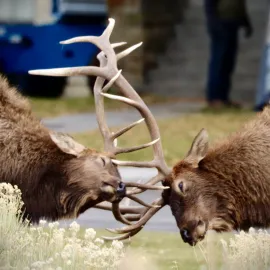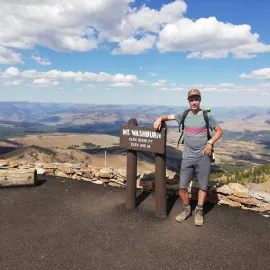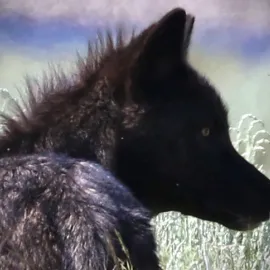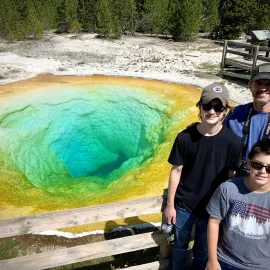A Family Ski in Yellowstone - A Day At Mammoth
We’re kicking and gliding up and down hills of perfectly groomed corduroy. The air temperature hovers around zero, but all around us boiling water pours out of the earth’s crust. My husband and I climb the short, but steep, hills with our two boys setting the pace. Passing hot springs, travertine terraces, snow-covered junipers and views of Mt Everts and Bunsen Peak makes it worth the effort.
Skiing at Mammoth Hot Springs
The Upper Terrace Loop Trail starts at the Upper Terrace parking area above Mammoth. Like many of Yellowstone’s cross-country ski trails, it is groomed regularly. The 1.5 mile loop climbs and descends moderately along a summer road, and is rated “easy to more difficult” by the park. It is also the start of the longer Snow Pass ski trail. The Mammoth Terraces are continually formed as water

We slow our strides as we pass the White Elephant Back Terrace. Here, a long ridge replaces the terrace shape seen so frequently elsewhere in Mammoth. Someone thought it looked like the vertebral column of an elephant, but our kids don’t agree.
At Orange Spring Mound we stop to take photos and gawk at the bacteria and algae that create the streaks of orange sherbet color. Its large mounded shape is the result of very slow water flow and mineral deposition. Past Orange Spring Mound we start descending. We scream down the hills, all at once going as fast as the skate skiers who have been passing us on our leisurely tour. They use this loop as a training ground and as a scenic exercise route.
At the bottom of the hill, we pause to look over Fort
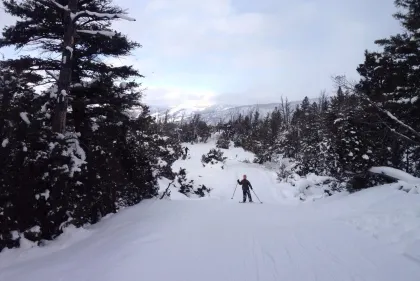 Yellowstone--the current administrative headquarters for the park and historic Army outpost. Three cow elk rest near the hot springs, somehow comfortable on the ridged terraces. Elk and bison hoof prints in the travertine and along the ski trail belie the presence of many more ungulates. From the overlook is just a short, mellow climb back to our car. The kids have cold noses, but have been thoroughly entertained by the animals and geology we’ve seen today.
Yellowstone--the current administrative headquarters for the park and historic Army outpost. Three cow elk rest near the hot springs, somehow comfortable on the ridged terraces. Elk and bison hoof prints in the travertine and along the ski trail belie the presence of many more ungulates. From the overlook is just a short, mellow climb back to our car. The kids have cold noses, but have been thoroughly entertained by the animals and geology we’ve seen today.Undeniably, winter is the best time to visit Yellowstone.
Geysers throw steaming water through the snow and into the robin egg sky. Elk and bison, followed by wolves and coyotes, fill the valleys. Crystals of snow sparkle in the low light, turning meadows and sagebrush flats into fairylands. And best of all, the crowds die way down when compared with summer. And the best way to get to know winter in Yellowstone is on a pair of cross-country skis or snowshoes.
BOOK A GUIDED TOUR OF YELLOWSTONE
Soak in the Hot Springs - A Dip in the Boiling River
After our ski we drive two miles north from Mammoth Hot Springs to the Boiling River, one of two places in the park where it is safe (and legal) to soak in Yellowstone’s famed hot springs. We don our winter boots and follow the packed path 0.5 miles to the sweet spot where the Boiling River flows into the Gardner River, creating perfect soaking pools. Hot water flows over travertine ledges creating little waterfalls and habitat for colorful algae and bacteria. There aren’t any changing rooms, so we wear our swimsuits under our clothes and change under a towel for the walk back. 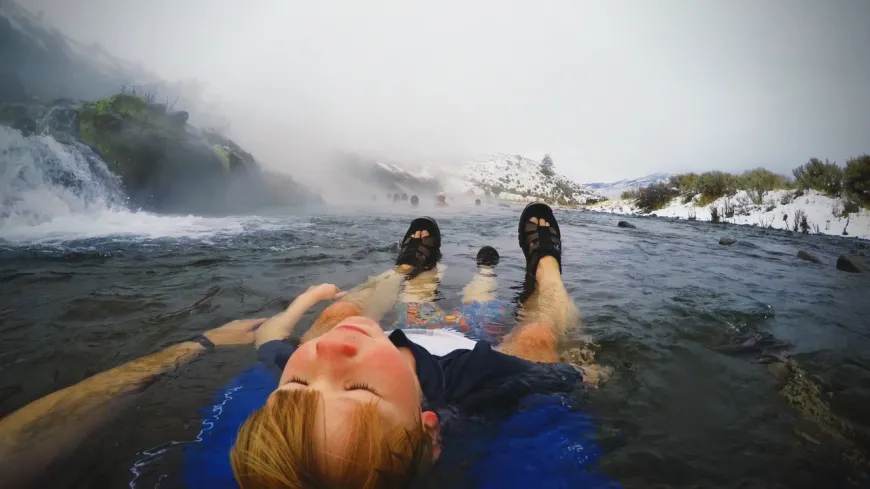
Water shoes make the walk down the river to the pools bearable, but it can be a challenge. We hold hands with our kids and stumble between the very hot Boiling River and the very cold Gardner River until we find a spot where the two mix. It’s this mixture that creates the perfect temperature for soaking and we lower ourselves into the pool and relax.
In the main river, dippers bob up and down on rocks before diving beneath the water in search of tasty (to them) invertebrates. Chunks of ice float by and the sides of Mount Everts are covered in snow. Tucked into the river, we are warm and cozy.
There’s nothing like a ski and soak to really experience the magic of Wonderland.




